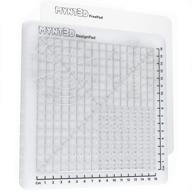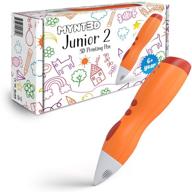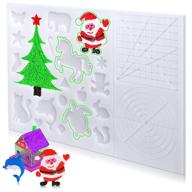
Review on Enhanced Precision and Control: ANYCUBIC Photon Monochrome Printer Delivers Next-Level Printing Performance by Brent Porter

Great device for home use
I thought long and hard about giving it 4 or 5 stars. I gave it a 4 not because I think it's not an amazing device, but because I think the proliferation of 5 star reviews has raised too many unreasonable expectations. I've wanted a miniature 3D printer from Wargaming for a long time. and HO models, but the level of detail in the FDM printer (which uses melted plastic filament) was not good enough. Until I found this, I thought SLA printers were financially prohibitive. Despite some negative reviews about it not working, I looked at the reviews here and elsewhere and decided it was a winner. I wasn't wrong. However, it is nothing more than a plug and play printer. We set up the printer, zeroed it as instructed, and immediately printed out a test form (a grid cube with "Anycubic Photon" written inside). It worked like a charm and got the job done in just over 3 hours. Then we quickly threw in a few files to print miniatures and failed after failure after failure, consuming the original bottle of resin and a split second. It's time to give up, isn't it? nope It's time to figure out what you're doing wrong and fix it. Which we finally did. First, when we removed the desktop from the printer and removed the test print, we accidentally messed up the desktop alignment because we didn't tighten the set screw enough. In fixing this problem, we messed up the zeroing process, and our second attempt at zeroing actually resulted in a reading that was too low. It should be wafer thin so you can feel some resistance on the paper, but NOT so strong that you can't pull it out. It is very important. Once you've done the process or watched the video, you'll see what I mean. It took us 4 failed prints until we figured out what we did wrong and zeroed it again, right this time. Second is the slicer software that comes with the printer. It's actually a very nice little program once you get the hang of it, but it does have a few quirks. On the one hand, he skimps on the curing time, especially with the first layers. The default value (IIRC) is 20 seconds for the first 8 layers and 8 seconds for the rest. We had to increase it to 120 seconds for the first 10 layers and 12 seconds for the rest. We're gradually reducing this 120 seconds, but too long won't hurt anything (just increases build time), but too short will result in the base not sticking to the buildplate. The second problem with slicer software is the use of supports. Using the auto-support feature on a job that already has a solid base creates cushions under your base, and these supports are often not strong enough to hold the print job in place. However, it is very good at creating supports for the "free-floating" parts of the product. We have found that the best solution is to run the autosupport function and mark where it adds supports, then reload the .stl file and manually add supports in the exact same places WITHOUT closing the entire model on the rafts place. This solved the issue of half-printed models falling off the build platform. There's definitely a learning curve to crafting the right props and you should be prepared for a few failed prints that will cost you resin along the way, but persistence will win. As with any problem, find out WHY your print failed and make adjustments accordingly, changing one setting at a time until you find a solution. Just blindly rushing forward is a path to frustration. And now I accept some of the other objections or concerns that have been raised by others. First the smell. Uncured resin has a noticeable burned plastic odor. We use our printer in a large basement area and try not to keep it in the same room. The smell doesn't bother me much and I don't wear a mask. Why not? Because the mask that comes with the printer is a regular surgical mask that doesn't really help keep the fumes from getting into your lungs. If the fumes were indeed toxic, a full face respirator with a real filtration system (or forced air supply) would be required. So it's a matter of comfort whether the room you work in is adequately ventilated. I wouldn't use this in a small space unless there is active ventilation. Second, wear gloves. I would. Liquid resin is sticky and difficult to remove from bare skin. Buy and use latex or nitrile gloves (better) in bulk. I use denatured alcohol to clean my printer and it's not the best option for your skin either. Third, post-processing and cleaning. This isn't as bad as it might seem. I have a Gladware jar with a tight-fitting lid (available at supermarkets) that is filled with 91% isopropyl alcohol and it helps remove any excess resin left behind after printing. For rinsing, you can use a small plastic bowl or bucket. never mind I have an old margarine container on site to hold the scraper and funnel that we use to pour the resin back into the tank, wiping it down from time to time. For cleaning we use a scraper to remove excess resin from the build plate and bath (save as much resin as possible), then wipe with a shop towel (scraper and funnel included) and finish with a rag soaked in denatured alcohol away. . Sure, it takes a few minutes, but it's not that hard. The rag can be washed and reused; The workshop towel goes in the trash can. There are enough free models available that you can probably find something that suits your needs even if you don't know 3D CAD, and it's not hard to get a free CAD program and make your own modifications. Don't let that intimidate you. The cost of printing your own, even with supplies and resin, is about 10% of the cost of buying a printed one from a store. Bottom line: if you're willing to put in the effort to overcome the learning curve, this is a great printer at a price that makes it affordable for hobbyists. First, these are buggy printers - there's a workaround for that, and my experience with AnyCubic customer service shows that they're very responsive (despite seeming to work on Chinese time). The second is impatience: you read my review and you know that this printer takes time and patience to get it right. If you don't have that kind of patience, you will likely be disappointed. Yes, we had a lot of failed prints initially, but now our only mistakes come from our inexperience with model making and prop placement. Users should also be aware that different resins have different curing times and your prints will fail if you don't adjust the settings.
- New
- Slightly torn
New products
Comments (0)
Top products in 🖨️ 3D Printers

🖨️ IFUN 3D Printing Liquid Resin: High-Quality Innovative Solution

5 Review
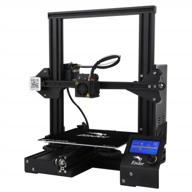
Economic Ender 3D Printer DIY Kit With Resume Printing Function, Large Printable Area Of 220X220X250MM By Creality 3D

18 Review

High-Precision And Stable Creality Ender 3 V2 3D Printer With New UI, Silent Mainboard, Effortless Filament Feed-In, XY-Axis Tensioner, Resume Printing, And Large Build Volume Of 220×220×250Mm

11 Review
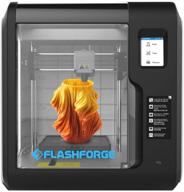
Flashforge Adventurer 3D Printer with Detachable Precision Leveling System

6 Review


